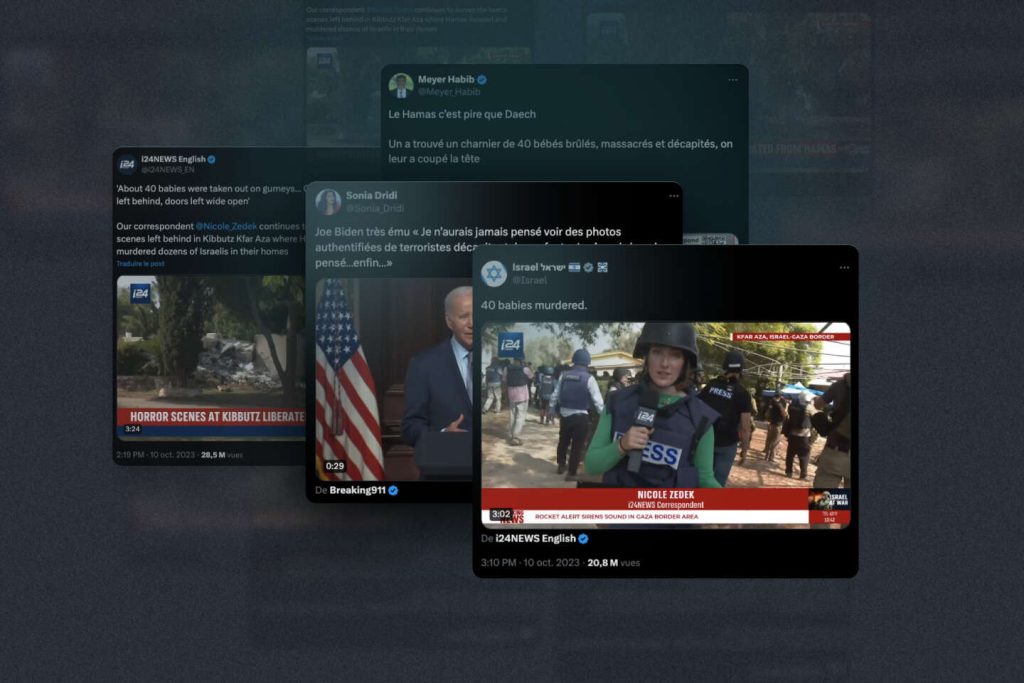After the Hamas attack on Israel that resulted in approximately 1,160 casualties on October 7, 2023, images of the massacre flooded social media and media outlets worldwide. Among the reports of murders, looting, and mutilations, a rumor emerged and gained significant traction: forty decapitated babies were allegedly found in the Kfar Aza kibbutz, one of the hardest-hit Israeli communities. However, the Israeli government confirmed that there were no forty decapitated babies, neither in Kfar Aza nor in any other kibbutz. The rumor, born out of a mix of emotion, confusion, and macabre exaggeration, raised questions about its origins and impact, drawing comparisons to past fabricated narratives like the Kuwaiti baby incubator hoax.
Three days after the Hamas attack, the Israeli army invited dozens of journalists and foreign correspondents, including one from Le Monde, to visit the Kfar Aza kibbutz where over sixty civilians were killed by Hamas terrorists. The highest-ranking spokesperson for the Israeli army, Richard Hecht, aimed to show the international press the unprecedented nature of the attack. The journalists witnessed the aftermath of the attack, with Israeli victims, Hamas fighters, and a pervasive sense of death still lingering in the air. Despite the controlled nature of the visit, some reporters expressed unease at the theatrics surrounding the site of the massacre.
Journalist Samuel Forey, who participated in the press visit to Kfar Aza, recounted his observations and interactions during the visit. He noted that no soldiers mentioned decapitated babies, and he could not verify the rumors circulating on social media. Forey highlighted the complexities of how false information can be used for propaganda purposes by both sides of the conflict. Despite efforts to document the atrocities accurately, the sensationalized image of decapitated babies contributed to the broader narrative of vilifying the Hamas movement, but it also obscured other verified brutalities.
General Itai Veruv, who led the counterattack, drew parallels with concentration camps and hinted at a death toll ranging from one hundred to one hundred fifty. The media coverage of funerals and the theatrical staging of the massacre site raised concerns among some reporters. Due to the risk of explosive traps, journalists were limited in their access to certain areas, and the only Israeli casualties they saw were adults in body bags. While the military officials on site did not mention dead babies, accounts from first responders and soldiers were more disturbing and ambiguous, adding to the complexity of the narrative.
In the aftermath of the attack and the spread of misinformation, questions arose about the role of media manipulation and propaganda in shaping public perceptions of the conflict. The conflicting reports from different sources highlighted the challenges of verifying information in a rapidly evolving situation. The impact of false narratives and their potential to influence public opinion and policy decisions underscored the need for responsible journalism and critical media literacy in times of crisis. As the dust settled on the tragic events, the search for truth and accountability continued amidst the ongoing tensions between Israel and Hamas, with the specter of misinformation casting a long shadow over the quest for justice and peace in the region.


